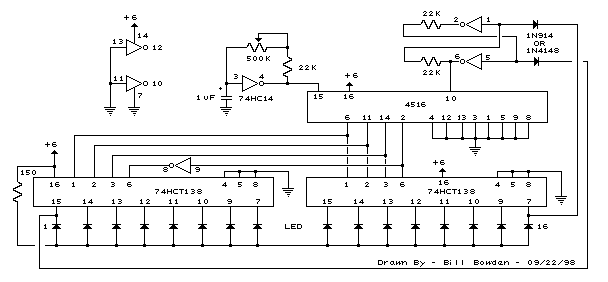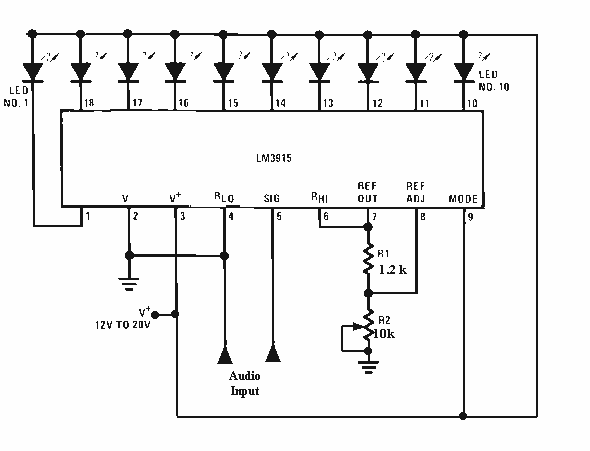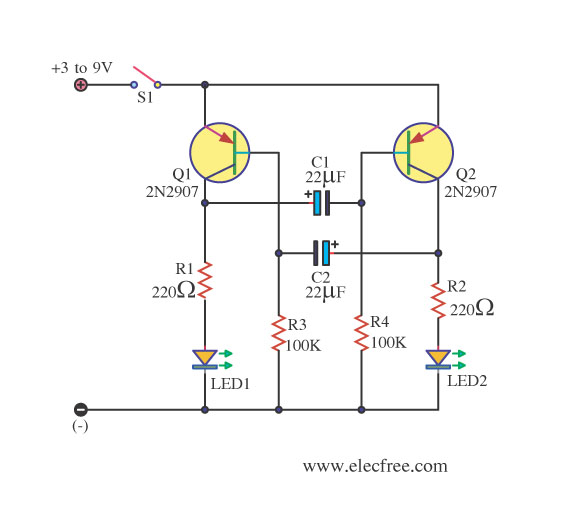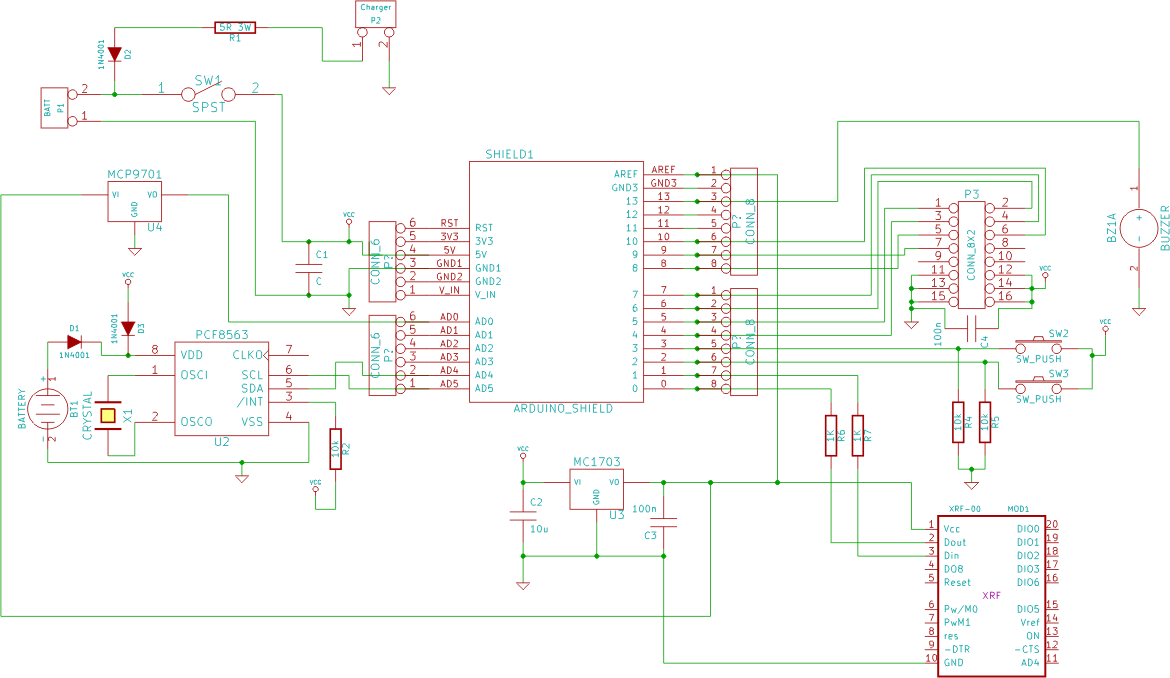
16 stage bi directional led sequencer

The bi-directional sequencer employs a 4-bit binary up/down counter (CD4516) along with two "1 of 8 line decoders" (74HC138 or 74HCT138) to create the well-known "Night Rider" display. A Schmitt Trigger oscillator generates the clock signal for the counter, and the rate can be modified using a 500K potentiometer.
The bi-directional sequencer circuit is designed to produce a visual effect similar to the "Night Rider" display, characterized by a moving light pattern. The core of the circuit is the CD4516, a 4-bit binary up/down counter that counts in both directions based on control inputs. This counter can be configured to count up or down depending on the logic levels applied to its control pins.
The output from the CD4516 is fed into two 1 of 8 line decoders, such as the 74HC138 or 74HCT138. These decoders take the 3-bit output from the counter and activate one of eight output lines, allowing for the sequential lighting of LEDs or other indicators in a specific pattern. The use of two decoders ensures that the circuit can handle the full range of outputs from the counter, providing a smooth transition between states.
A Schmitt Trigger oscillator is incorporated into the design to provide a stable clock signal to the CD4516. This oscillator generates a square wave signal, which is essential for synchronizing the counting process. The frequency of the clock signal can be adjusted via a 500K potentiometer, allowing the user to change the speed of the light sequence. By varying the resistance, the duty cycle and frequency of the oscillator can be fine-tuned, resulting in a customizable visual effect.
Overall, this bi-directional sequencer circuit is an excellent example of digital electronics in action, combining counters, decoders, and oscillators to create a dynamic display that can be used in various applications, from decorative lighting to educational demonstrations in digital logic.The bi-directional sequencer uses a 4 bit binary up/down counter (CD4516) and two ""1 of 8 line decoders"" (74HC138 or 74HCT138) to generate the popular ""Night Rider"" display. A Schmitt Trigger oscillator provides the clock signal for the counter and the rate can be adjusted with the 500K pot..
🔗 External reference
The bi-directional sequencer circuit is designed to produce a visual effect similar to the "Night Rider" display, characterized by a moving light pattern. The core of the circuit is the CD4516, a 4-bit binary up/down counter that counts in both directions based on control inputs. This counter can be configured to count up or down depending on the logic levels applied to its control pins.
The output from the CD4516 is fed into two 1 of 8 line decoders, such as the 74HC138 or 74HCT138. These decoders take the 3-bit output from the counter and activate one of eight output lines, allowing for the sequential lighting of LEDs or other indicators in a specific pattern. The use of two decoders ensures that the circuit can handle the full range of outputs from the counter, providing a smooth transition between states.
A Schmitt Trigger oscillator is incorporated into the design to provide a stable clock signal to the CD4516. This oscillator generates a square wave signal, which is essential for synchronizing the counting process. The frequency of the clock signal can be adjusted via a 500K potentiometer, allowing the user to change the speed of the light sequence. By varying the resistance, the duty cycle and frequency of the oscillator can be fine-tuned, resulting in a customizable visual effect.
Overall, this bi-directional sequencer circuit is an excellent example of digital electronics in action, combining counters, decoders, and oscillators to create a dynamic display that can be used in various applications, from decorative lighting to educational demonstrations in digital logic.The bi-directional sequencer uses a 4 bit binary up/down counter (CD4516) and two ""1 of 8 line decoders"" (74HC138 or 74HCT138) to generate the popular ""Night Rider"" display. A Schmitt Trigger oscillator provides the clock signal for the counter and the rate can be adjusted with the 500K pot..
🔗 External reference





